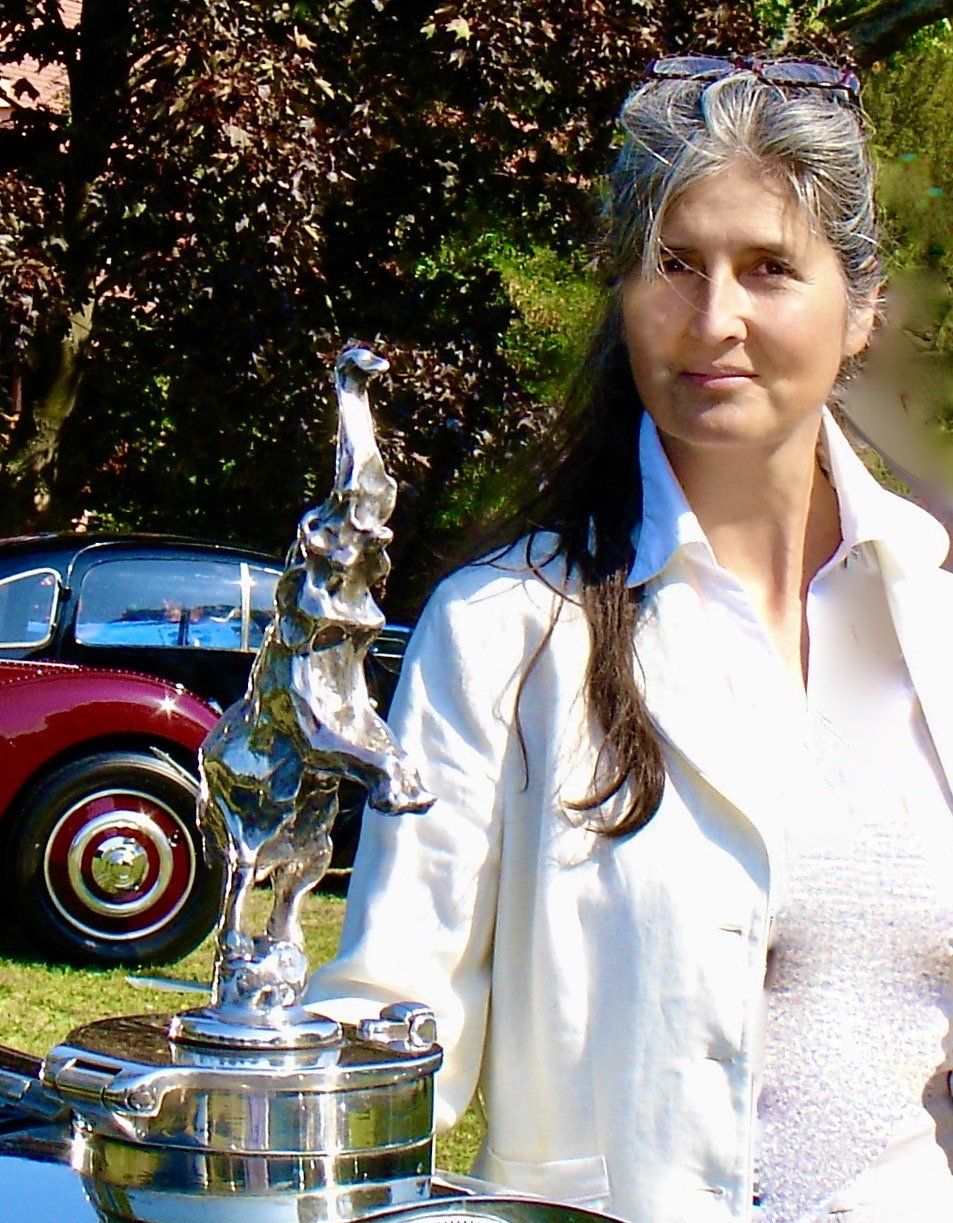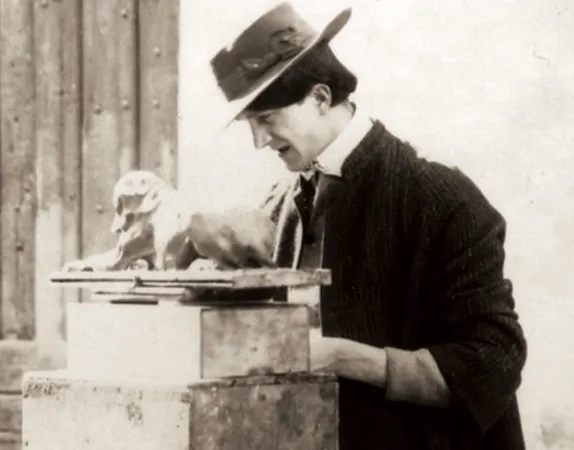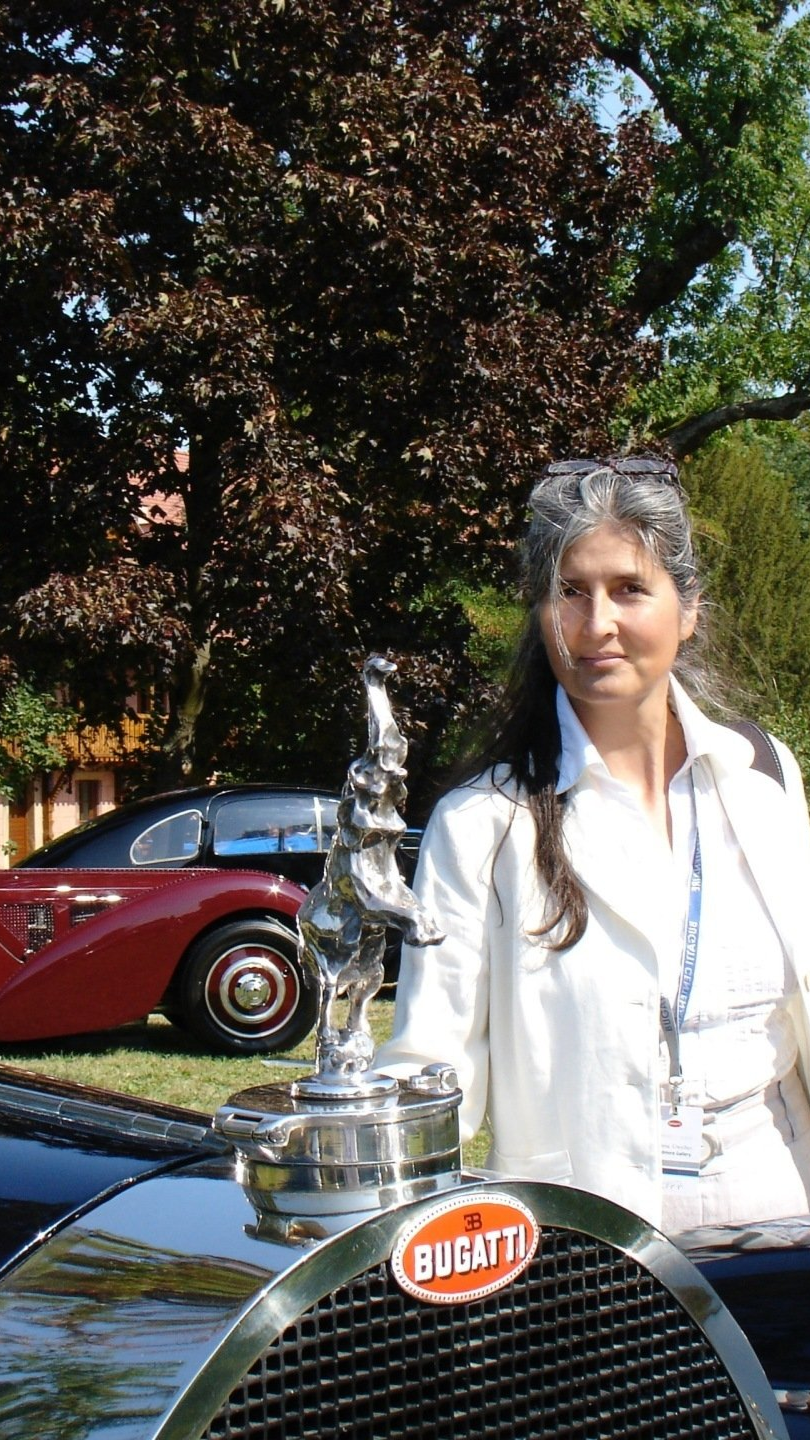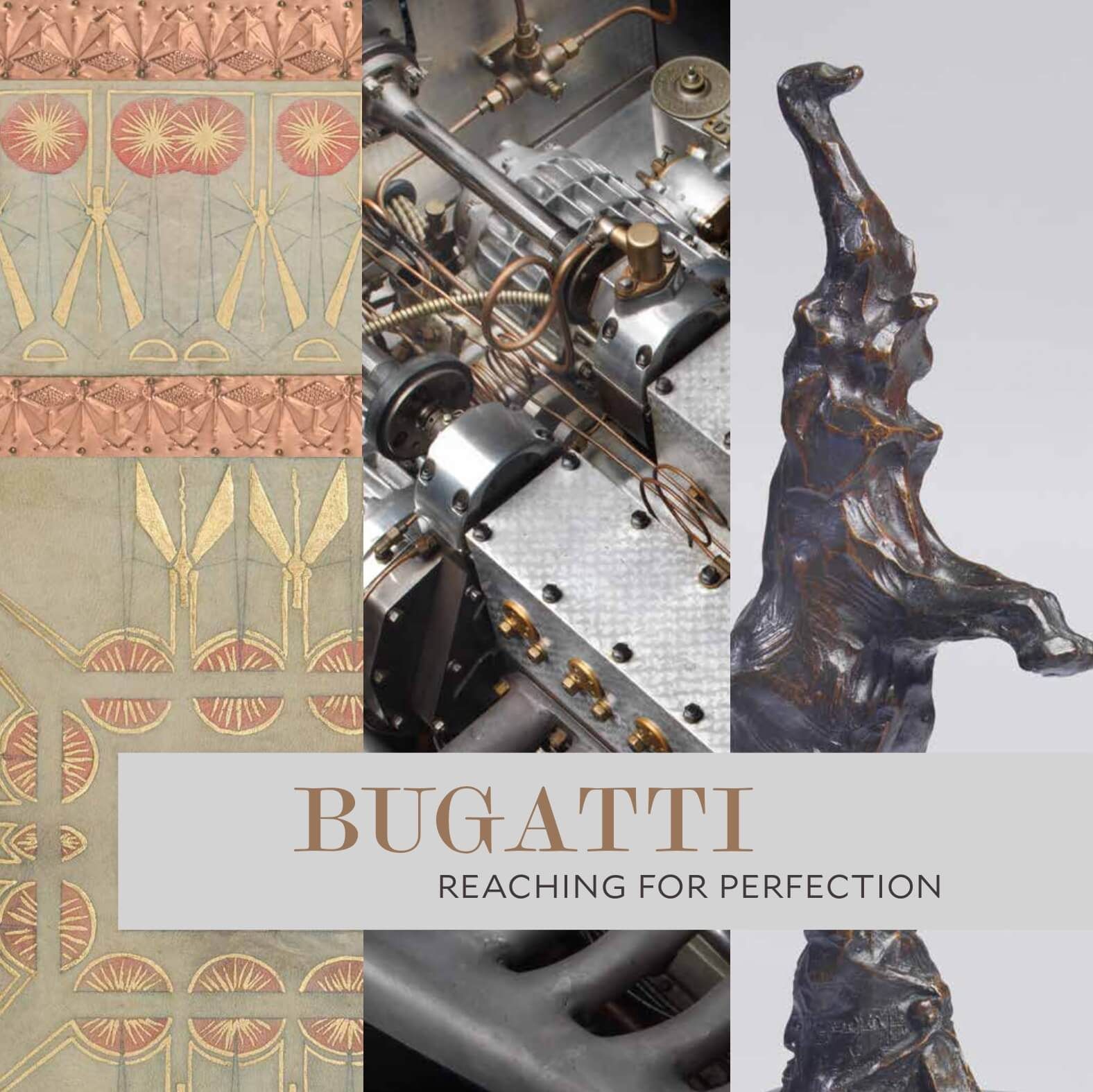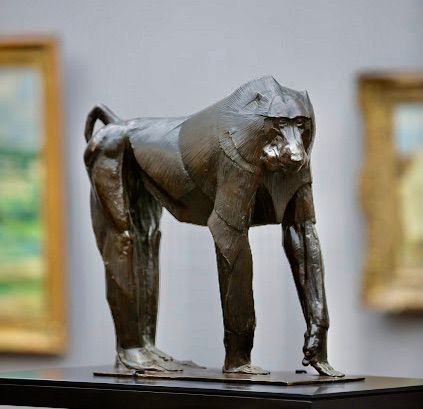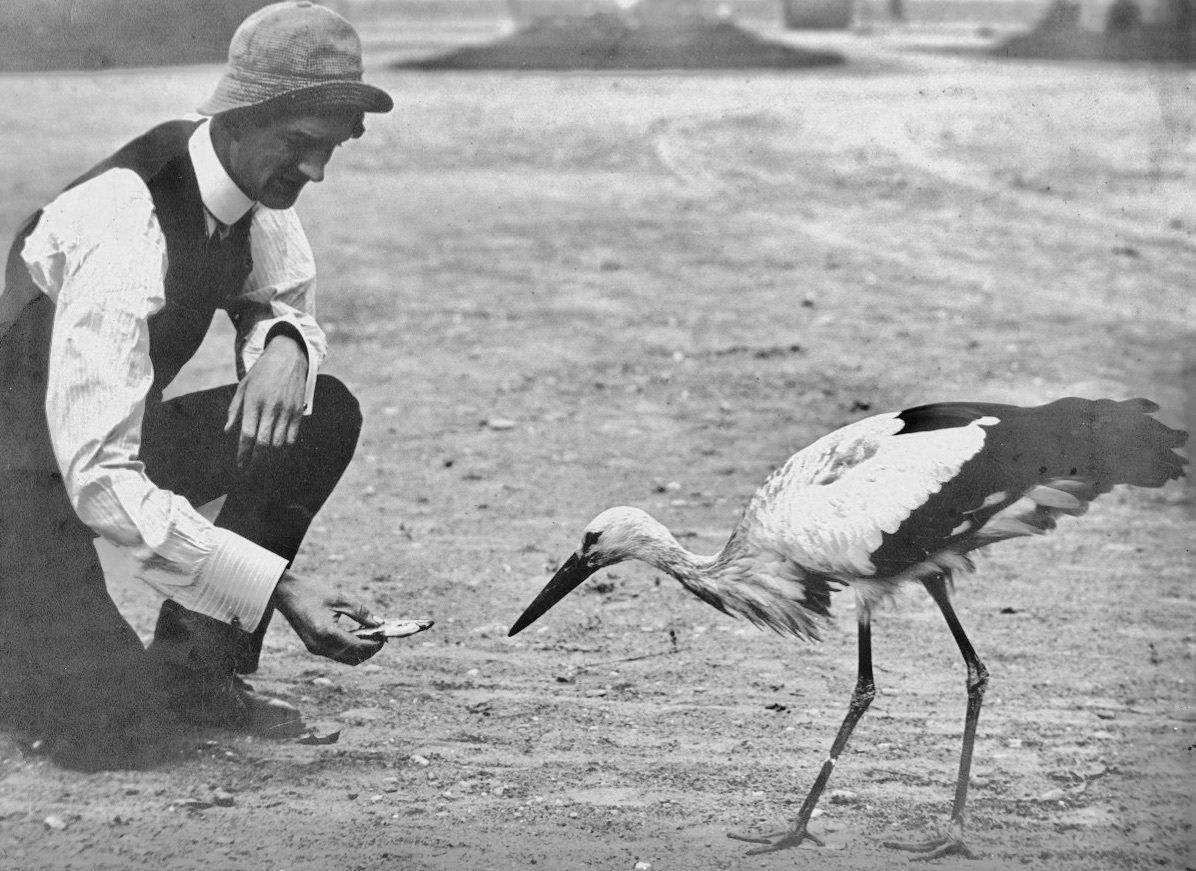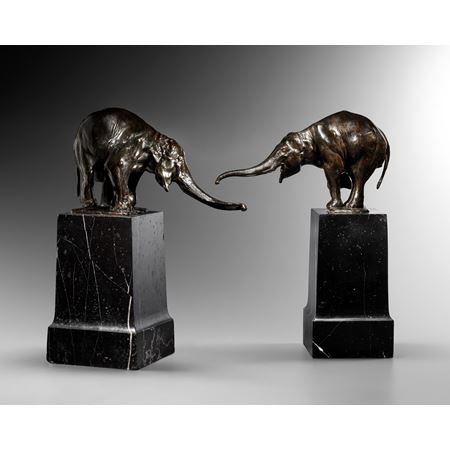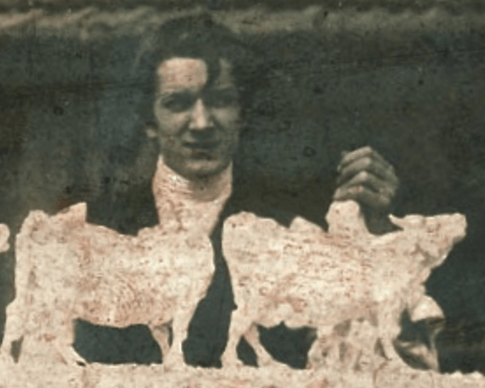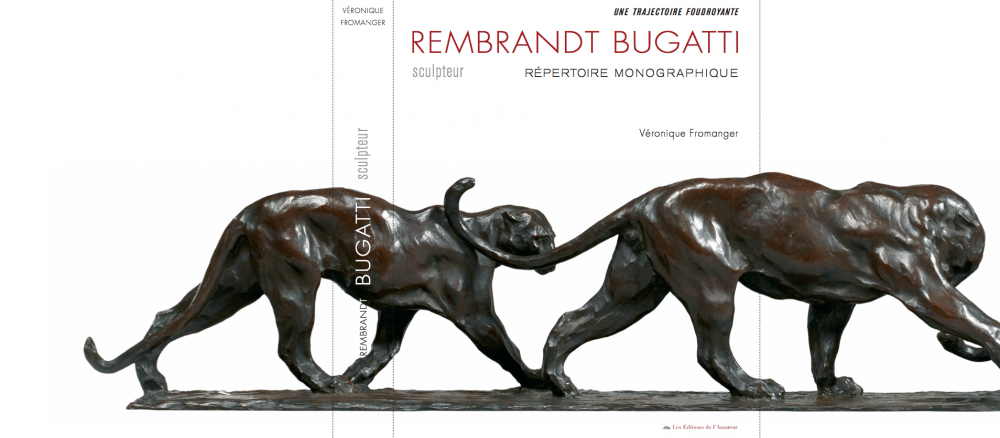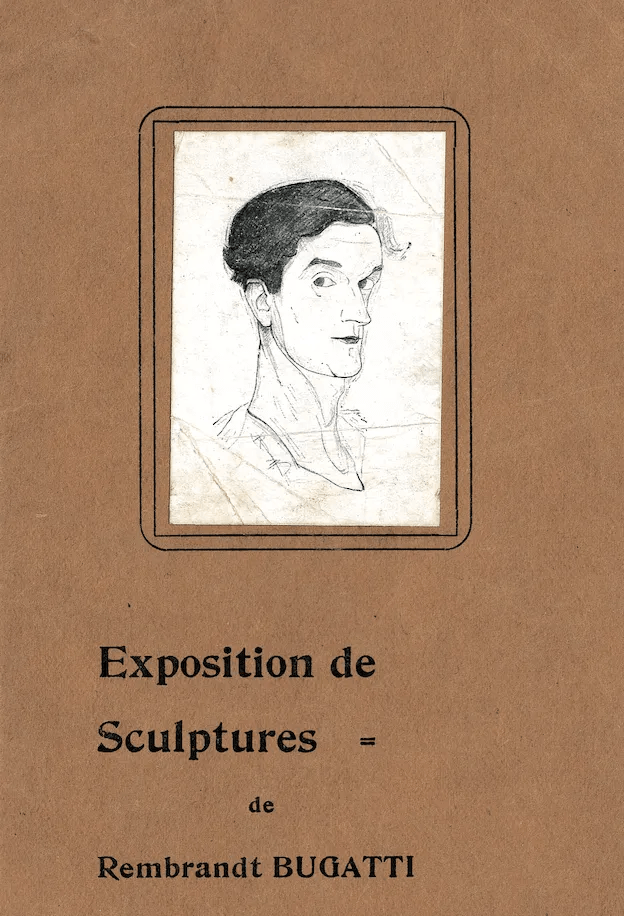fromanger@rembrandtbugatti.info
Répertoire monographique
V. Fromanger
WHO WERE REMBRANDT BUGATTI'S "FATHERS"?
At the end of the nineteenth century, the Accademia di Belle Arti di Brera, the renowned school of fine arts in Milan, played host to a true meeting of minds, assembling in its midst a generation of such exceptional men as Giovanni Segantini, Carlo Bugatti, Paolo Troubetzkoy, Giuseppe Grandi, Medardo Rosso and Vittore Grubicy. Every one of them would be a father figure to the young Rembrandt Bugatti.
GIOVANNI SEGANTINI
It is to his uncle, Giovanni Segantini (1858-1899) that Rembrandt Bugatti owes his name, chosen in honour of Rembrandt Harmenszoon van Rijn. Segantini was the painter of Swiss mountain landscapes known as the "Van Gogh of the Alps" and a leading figure of the Italian Divisionist movement, future favorite of the Grubicy Gallery.A collector of rare books and influenced by Nietzschean phoilosophy and his reading of Schopenhauer, Maeterlinck, and Indian literature, he was admired by Max Liebermann, Gustav Klimt and the Vienna Secession. Segantini was equally inspired by the chemists M. E. Chevreul and N. O. Rood and their research into colour division. In turn, his compositions juxtapose multiple, fine, glittering brush strokes to produce colors unparalleled in their rich luminosity. In his correspondence, Segantini writes:"I am a passionate nature lover(...) In these mountains I feel irrepressibly exhilarated (...) I have lived with animals for a long time in order that I might understand their passion, their pain and their joy.I have observed rocks, snowfall, rainstorms, large mountain ranges and single blades of grass and have searched for their spirit in my soul. I asked the flower the secret of universal beauty and the flower replied by perfuming my soul with love".
CARLO BUGATTI
It is here at the Accademia that Segantini would meet Carlo Bugatti (1856-1940), son of Carlo Giovanni Luigi Bugatti from Nova Milanese; a sculptor working in wood and stone and a renowned architect fascinated by perpetual motion.
Carlo was brilliant, extravagant, anti-conformist and ferociously independent. He studied architecture and decoration in Paris and Milan.While very devoted to traditional craftsmanship values, Carlo was thoroughly familiar with the dynamics of form.He designed and produced extraordinarily original and inventive architectural furniture in exotic wood covered with vellum.His approach is at once asymmetric and geometric, favouring egg shaped, circular, oval and ogive motifs coupled with exotic, Japanese-inspired, moresque decoration.As early as 1890 , Bugatti patented his creations.Carlo Bugatti created animalier architectural designs and later on would use his fabulous imagination to compose metalwork in cast and chiselled silver, decorated with fantastical animals.
At twelve years old, Rembrandt Bugatti was a precocious child, an apprentice craftsman according to true italian tradition.Immensely high standards of skilled handwork would be the basis of Bugatti's education and this propensity for technical savoir-faire would remain with him his entire life.His father taught him drawing, perspective and the art of handling various tools.Bugatti was thus introduced to handwork in wood , stone and metal.Most importantly, he learned the arts of plaster moulding and plastiline modelling.Invented by Tschudi in Genoa in the mid nineteenth century, plastiline is a very malleable type of modelling clay, off white in colour, made of kaolin, tallow, lanolin and sulphur; the great technical novelty being that plastiline does not harden and need not be dampened when stored.In 1907, the italian art critic Vittorio Rossi Sacchetti writes in the first monograph dedicated to Rembrandt Bugatti:"(...) playing with the malleable material to hand in his father's studio as a child, he discovers to his surprise that this material can take on a shape and life of its own with natural, intuitive vision.It is from these admirably humble beginnings that this artist is born."
PAOLO TROUBETZKOY
The Italian sculptor Paolo Troubetzkoy (1866-1936) is of Russian descent by his father, Prince Petrovitch Troubetzkoy, and American on his mother's side, the opera singer and pianist Ada Winans.On 27 May 1896, Troubezkoy made a bust of Segantini during an exhibition at the Grubicy brother's art gallery, spontaneously modelling his friend's bust on the spot in less than three hours, in an exploration of instantaneous emotion.Later, in 1899, Troubetzkoy would ask his friend Carlo Bugatti to sit for him.Carlo donned an overcoat and his large wide-brimmed top hat or huit-reflets with a low crown.This taste for elegance and for original, tailor-made clothes would be passed on his two sons.His daughter Dejanice would become a dressmaker, and it was she who "carefully and creatively" cut and sewed clothes fot the entire family.Troubetzkoy was already famous, with one entire hall of the Russian pavilion dedicated to him at the Paris World Fair in 1900.In Russia, Troubetzkoy had been a portraitist to the Russian nobility.His art and his lifestyle were equally eccentric;he regularly slept on the ground in his studio surrounded by his Siberian husky dogs, wolves and even a bear.At the Ecole des Beaux-Arts, his "impressionist" studio and his modern vision of a new sculptural space were a resounding success.
MEDARDO ROSSO
Troubetzkoy's oeuvre very much follows in the tradition of sculptors taught at the Accademia di Brera by Giuseppe Grandi (1843-1894); the sole sculptor having contributed to the "Scapigliatura".This artistic and literary movement was opposed to traditional bourgeois values and imbued with the rebellious spirit which would characterise aspects of the Futurist movement to come. Rather than using continuous lines to define form, Grandi prefers a rough, irregular surface which captures and energises the light, giving the sculpture real substance:"La stecca lavora nervosa e morbida, come un pennello, a rotture, scavature, fiocchi, fratture, sospesi segni che suggeriscono il colore quasi e accennano il chiaroscuro condizionato e completato dai cangianti accidenti della luce".
The first works by the sculptor Medardo Rosso (1858-1928), a wizard of wax modelling and a master founder, passionate about photography, are a perfect continuity of Giuseppe Grandi's revolutionary language.In Milan, Rosso was a member of the Scuderia Grubicy stable of artists and he would choose Paris in which to pursue his own brand of experimental impressionism. However, his contentious relationship with the all powerful sculptor Auguste Rodin would prevent him from flourishing and establishing his reputation.
ALBERTO AND VITTORE GRUBICY
The brothers Alberto and Vittore Grubicy de Dragon came originally from Hungary and were both multi-talented.Art critics, collectors and art dealers working between Milan, London, Berlin, Antwerp and Paris, both brothers played an important role in the dissemination of Italian art in Europe.In London, it is they who in 1888 exhibited Segantini's paintings, Carlo Bugatti's furniture, and sculptures by Paolo Troubtzkoy and Medardo Rosso.Alberto Grubicy (1852-1922) was the first to display Rembrandt Bugatti's sculptures in Venice around 1901 and would also be the last to exhibit him in Milan in 1915.Introduced to painting by the Dutch painter Anton Mauve, Vittore Grubicy de Dragon was a key advocate of John Ruskin's theories. He mirrored Ruskin in the attempts to establish links between modern art, landscape, nature, morality and the modern humain condition to serve as a counterweight to the new industrial civilisation.All of these creative artists were united through the bonds of music and opera.As a very young man, Rembrandt Bugatti became friends with the tenor Giuseppe Borgatti and made a statuette oh him.By 1902, none of Bugatti's "fathers" could deny that he already showed great maturity and confidence in his modelling.
Throughout his dazzling career, Bugatti would look to his "fathers" for support. In Paris, René Dubois would become his "adoptive father". Later, in Antwerp, he was replaced by François Crozier. In turn, his exclusive founder and éditeur, Hébrard, counted both as a friend and "boss".
The present monographic repertoire shows us the opulence of shapes, areas and perspectives of Rembrandt Bugatti’s art, conceived with a kind of certainty and freedom that even the greatest challenges, in view of his mooching-around models, mastered without an effort: a photographic memory, a quasi one-to-one transfer from eye to hand; not an animal sculptor, rather a born sculptor per se; an absolute talent in sculpture, a man, whom every vehicle seemed to be fitting, in order to capture life in all of its forms and feelings; a portraitist of humans and animals, for whom the fauna from every continent, in the end, opened a world of patterns and structures, rhythms and means of behaviour, which, in order to tap the fullest potential, would have brought other talent to their limits.
And, the monographic repertoire shows us even more: a young man – an obvious lone wolf and still a family-oriented man, a man with humour and fickleness having the greatest self-confidence and the most abysmal doubts. Even in terms of how to place him nationally – highly elusive, half of the continent – how modern! – all in one single gestalt: a tall, young Italian in conspicuous clothes, whom one, for this reason, would surely call „Americano“, who speaks the language of France and lives in Flanders, while his brother builds cars in Alsace. The dachshund that accompanies him is a German? After all, he has the German name »Wurst« (sausage).
Keeping the memory alive and the magnificent rediscovery of Rembrandt Bugatti for a wide audience is, as it was often the case in the past, first the work of individuals; people who fight for their convictions over years and decades beyond all fashions, who restlessly and laboriously save works, sources and documents, trace descendants, record traditions and exhibit art. Véronique Fromanger and the people close to her have done all of this.
A monographic repertoire is the highest acclaim of a life’s work – and, within itself, the same thing: a mission of titanic proportion.
Rembrandt Bugatti – and all of us – owe much to the author of the book at hand. „I hope and believe that I will succeed in creating a life’s work that no contemporary or previous animal sculptor had ever created“, wrote Bugatti. The monographic repertoire at hand proves that his hope came true. The serious and profound manner in which Rembrandt captured the wealth of the world in his sculptures make him one of the most unique artists in the history of sculpture.
par PH.Demandt
WHO WERE REMBRANDT BUGATTI'S "FATHERS"?
At the end of the nineteenth century, the Accademia di Belle Arti di Brera, the renowned school of fine arts in Milan, played host to a true meeting of minds, assembling in its midst a generation of such exceptional men as Giovanni Segantini, Carlo Bugatti, Paolo Troubetzkoy, Giuseppe Grandi, Medardo Rosso and Vittore Grubicy. Every one of them would be a father figure to the young Rembrandt Bugatti.
GIOVANNI SEGANTINI
It is to his uncle, Giovanni Segantini (1858-1899) that Rembrandt Bugatti owes his name, chosen in honour of Rembrandt Harmenszoon van Rijn. Segantini was the painter of Swiss mountain landscapes known as the "Van Gogh of the Alps" and a leading figure of the Italian Divisionist movement, future favorite of the Grubicy Gallery.A collector of rare books and influenced by Nietzschean phoilosophy and his reading of Schopenhauer, Maeterlinck, and Indian literature, he was admired by Max Liebermann, Gustav Klimt and the Vienna Secession. Segantini was equally inspired by the chemists M. E. Chevreul and N. O. Rood and their research into colour division. In turn, his compositions juxtapose multiple, fine, glittering brush strokes to produce colors unparalleled in their rich luminosity. In his correspondence, Segantini writes:"I am a passionate nature lover(...) In these mountains I feel irrepressibly exhilarated (...) I have lived with animals for a long time in order that I might understand their passion, their pain and their joy.I have observed rocks, snowfall, rainstorms, large mountain ranges and single blades of grass and have searched for their spirit in my soul. I asked the flower the secret of universal beauty and the flower replied by perfuming my soul with love".
CARLO BUGATTI
It is here at the Accademia that Segantini would meet Carlo Bugatti (1856-1940), son of Carlo Giovanni Luigi Bugatti from Nova Milanese; a sculptor working in wood and stone and a renowned architect fascinated by perpetual motion.
Carlo was brilliant, extravagant, anti-conformist and ferociously independent. He studied architecture and decoration in Paris and Milan.While very devoted to traditional craftsmanship values, Carlo was thoroughly familiar with the dynamics of form.He designed and produced extraordinarily original and inventive architectural furniture in exotic wood covered with vellum.His approach is at once asymmetric and geometric, favouring egg shaped, circular, oval and ogive motifs coupled with exotic, Japanese-inspired, moresque decoration.As early as 1890 , Bugatti patented his creations.Carlo Bugatti created animalier architectural designs and later on would use his fabulous imagination to compose metalwork in cast and chiselled silver, decorated with fantastical animals.
At twelve years old, Rembrandt Bugatti was a precocious child, an apprentice craftsman according to true italian tradition.Immensely high standards of skilled handwork would be the basis of Bugatti's education and this propensity for technical savoir-faire would remain with him his entire life.His father taught him drawing, perspective and the art of handling various tools.Bugatti was thus introduced to handwork in wood , stone and metal.Most importantly, he learned the arts of plaster moulding and plastiline modelling.Invented by Tschudi in Genoa in the mid nineteenth century, plastiline is a very malleable type of modelling clay, off white in colour, made of kaolin, tallow, lanolin and sulphur; the great technical novelty being that plastiline does not harden and need not be dampened when stored.In 1907, the italian art critic Vittorio Rossi Sacchetti writes in the first monograph dedicated to Rembrandt Bugatti:"(...) playing with the malleable material to hand in his father's studio as a child, he discovers to his surprise that this material can take on a shape and life of its own with natural, intuitive vision.It is from these admirably humble beginnings that this artist is born."
PAOLO TROUBETZKOY
The Italian sculptor Paolo Troubetzkoy (1866-1936) is of Russian descent by his father, Prince Petrovitch Troubetzkoy, and American on his mother's side, the opera singer and pianist Ada Winans.On 27 May 1896, Troubezkoy made a bust of Segantini during an exhibition at the Grubicy brother's art gallery, spontaneously modelling his friend's bust on the spot in less than three hours, in an exploration of instantaneous emotion.Later, in 1899, Troubetzkoy would ask his friend Carlo Bugatti to sit for him.Carlo donned an overcoat and his large wide-brimmed top hat or huit-reflets with a low crown.This taste for elegance and for original, tailor-made clothes would be passed on his two sons.His daughter Dejanice would become a dressmaker, and it was she who "carefully and creatively" cut and sewed clothes fot the entire family.Troubetzkoy was already famous, with one entire hall of the Russian pavilion dedicated to him at the Paris World Fair in 1900.In Russia, Troubetzkoy had been a portraitist to the Russian nobility.His art and his lifestyle were equally eccentric;he regularly slept on the ground in his studio surrounded by his Siberian husky dogs, wolves and even a bear.At the Ecole des Beaux-Arts, his "impressionist" studio and his modern vision of a new sculptural space were a resounding success.
MEDARDO ROSSO
Troubetzkoy's oeuvre very much follows in the tradition of sculptors taught at the Accademia di Brera by Giuseppe Grandi (1843-1894); the sole sculptor having contributed to the "Scapigliatura".This artistic and literary movement was opposed to traditional bourgeois values and imbued with the rebellious spirit which would characterise aspects of the Futurist movement to come. Rather than using continuous lines to define form, Grandi prefers a rough, irregular surface which captures and energises the light, giving the sculpture real substance:"La stecca lavora nervosa e morbida, come un pennello, a rotture, scavature, fiocchi, fratture, sospesi segni che suggeriscono il colore quasi e accennano il chiaroscuro condizionato e completato dai cangianti accidenti della luce".
The first works by the sculptor Medardo Rosso (1858-1928), a wizard of wax modelling and a master founder, passionate about photography, are a perfect continuity of Giuseppe Grandi's revolutionary language.In Milan, Rosso was a member of the Scuderia Grubicy stable of artists and he would choose Paris in which to pursue his own brand of experimental impressionism. However, his contentious relationship with the all powerful sculptor Auguste Rodin would prevent him from flourishing and establishing his reputation.
ALBERTO AND VITTORE GRUBICY
The brothers Alberto and Vittore Grubicy de Dragon came originally from Hungary and were both multi-talented.Art critics, collectors and art dealers working between Milan, London, Berlin, Antwerp and Paris, both brothers played an important role in the dissemination of Italian art in Europe.In London, it is they who in 1888 exhibited Segantini's paintings, Carlo Bugatti's furniture, and sculptures by Paolo Troubtzkoy and Medardo Rosso.Alberto Grubicy (1852-1922) was the first to display Rembrandt Bugatti's sculptures in Venice around 1901 and would also be the last to exhibit him in Milan in 1915.Introduced to painting by the Dutch painter Anton Mauve, Vittore Grubicy de Dragon was a key advocate of John Ruskin's theories. He mirrored Ruskin in the attempts to establish links between modern art, landscape, nature, morality and the modern humain condition to serve as a counterweight to the new industrial civilisation.All of these creative artists were united through the bonds of music and opera.As a very young man, Rembrandt Bugatti became friends with the tenor Giuseppe Borgatti and made a statuette oh him.By 1902, none of Bugatti's "fathers" could deny that he already showed great maturity and confidence in his modelling.
Throughout his dazzling career, Bugatti would look to his "fathers" for support. In Paris, René Dubois would become his "adoptive father". Later, in Antwerp, he was replaced by François Crozier. In turn, his exclusive founder and éditeur, Hébrard, counted both as a friend and "boss".
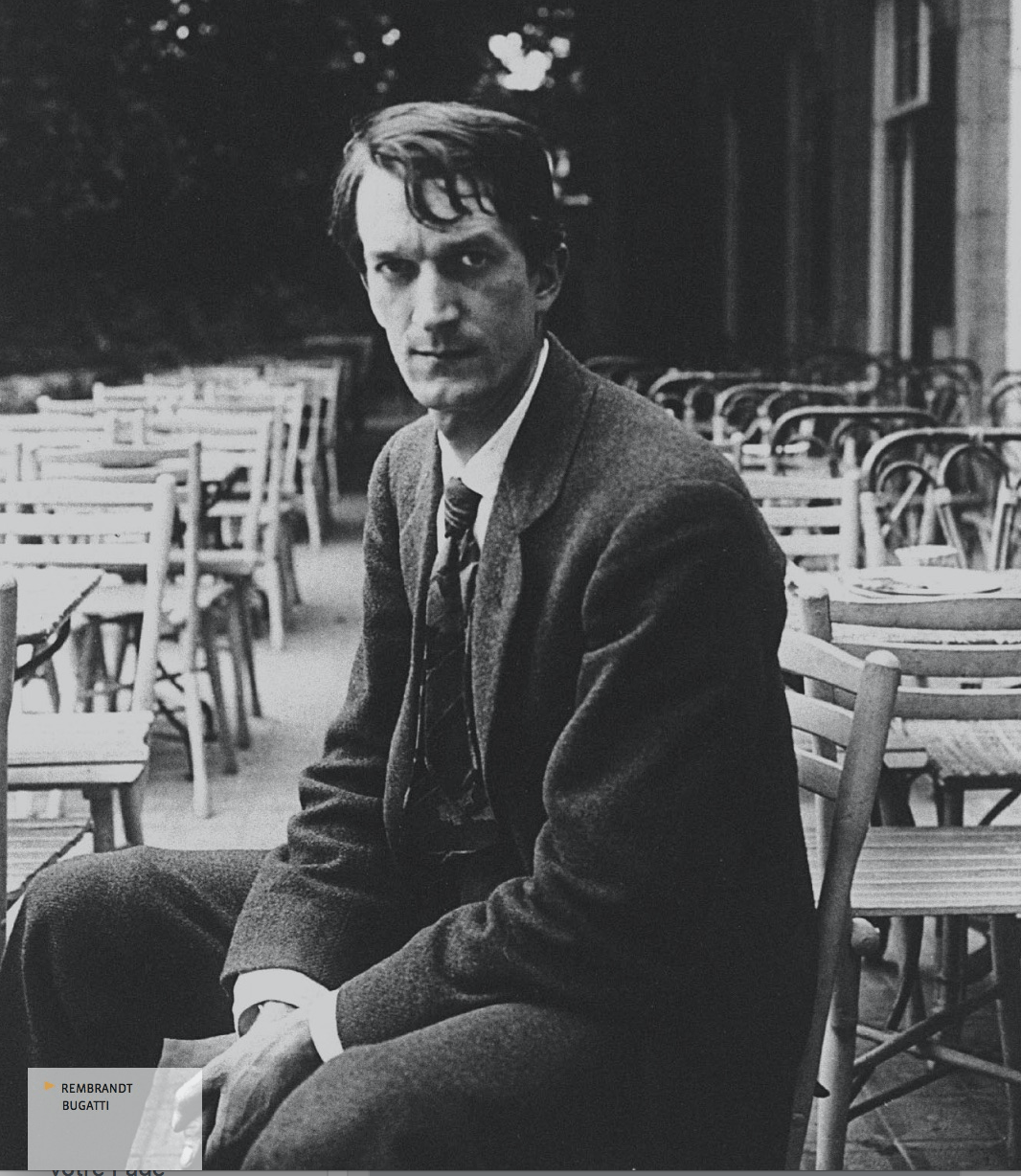
Who were Rembrandt Bugatti’s "fathers"?
- Giovanni Segantini - Carlo Bugatti - Paolo Troubetzkoy -
- Giuseppe Grandi and Medardo Rosso -
- The Grubicy gallery and
- Bice Bugatti-Segantini

Toute une vie avec Bugatti: Alain Delon 1935-2024: en 2016 la journaliste Valérie du Figaro lui demande : "vous auriez aimé le rencontrer?" Alain Delon lui répond avec émotion en retenant son souffle: "ouf....j'aurais été son objet, son serviteur, saurait été formidable il y a tout chez Bugatti, toute la vie, tous les sentiments sont dans ses oeuvres, j'ai envie de les embrasser comme un fou" A whole life with Bugatti: Alain Delon 1935-2024: in 2016 the journalist Valérie from Le Figaro asked him: "would you have liked to meet him?" Alain Delon answered her with emotion, holding his breath: "phew....I would have been his object, his servant, it would have been great there is everything in Bugatti, all life, all feelings are in his works, I want to kiss them like crazy"
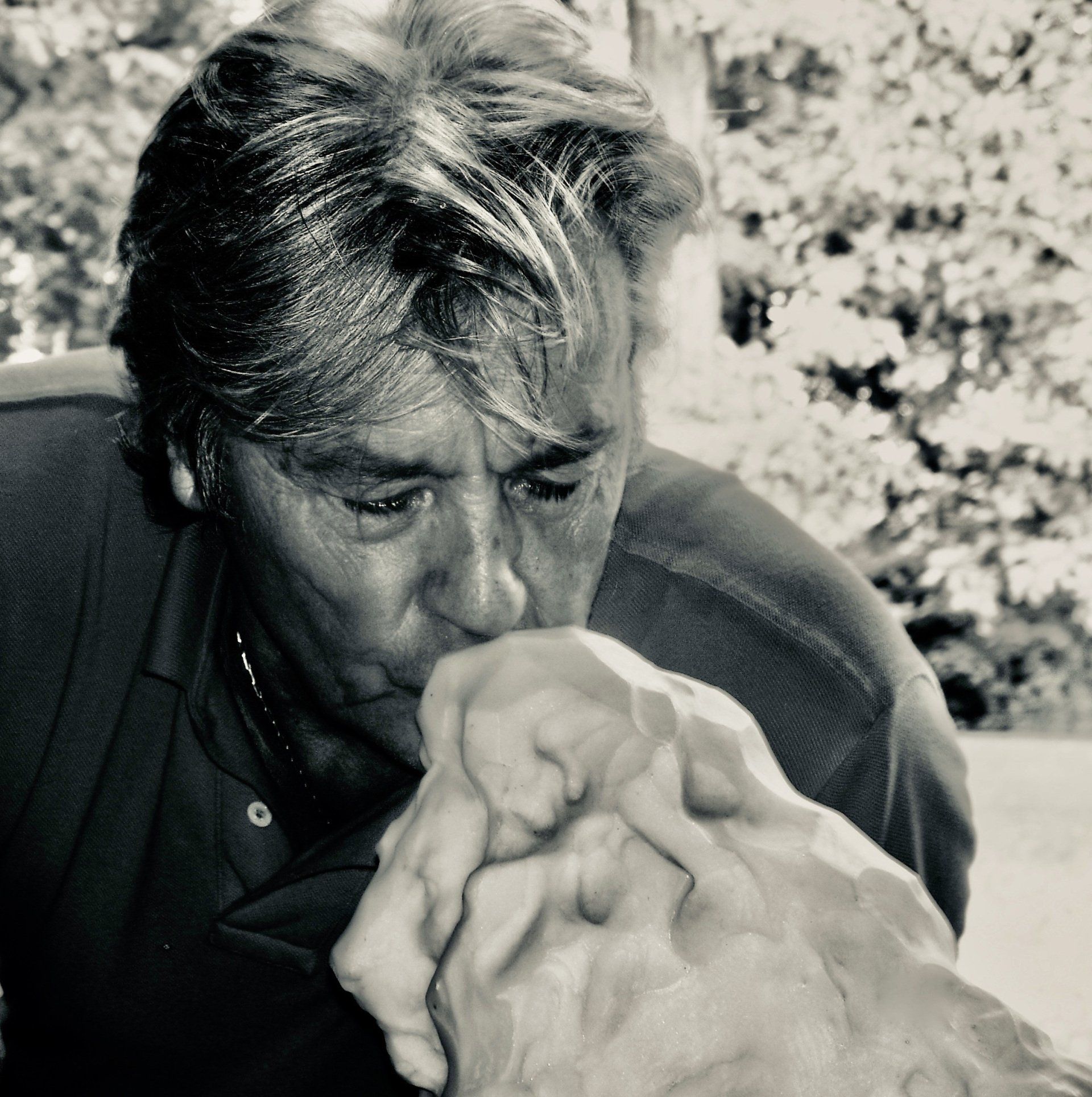
De 1979 à 2024, la collection Alain Delon. Que peut-on dire d'un homme comme lui? Dans le monde entier Alain Delon est une icône, déjà une légende, une image étincelante, charnelle, sauvage.Mais, derrière les mots et les images, il n'y a plus qu'un artiste solitaire dont la sensibilité à fleur de peau est extrême. Collectionner les oeuvres d'art fut toujours pour lui un mode d'expression vital.Sa rencontre avec Rembrandt Bugatti était inévitable. From 1979 to 2024, the Alain Delon collection. What can we say about this man? Worldwide Alain Delon is an icon, already a legend, a sparkling, carnal, wild image. But behind the words and the images there is only one solitary man, an artist whose sensitivity is extreme. Collecting works of art is for him a vital mode of expression. His meeting with Rembrandt Bugatti was inevitable.
